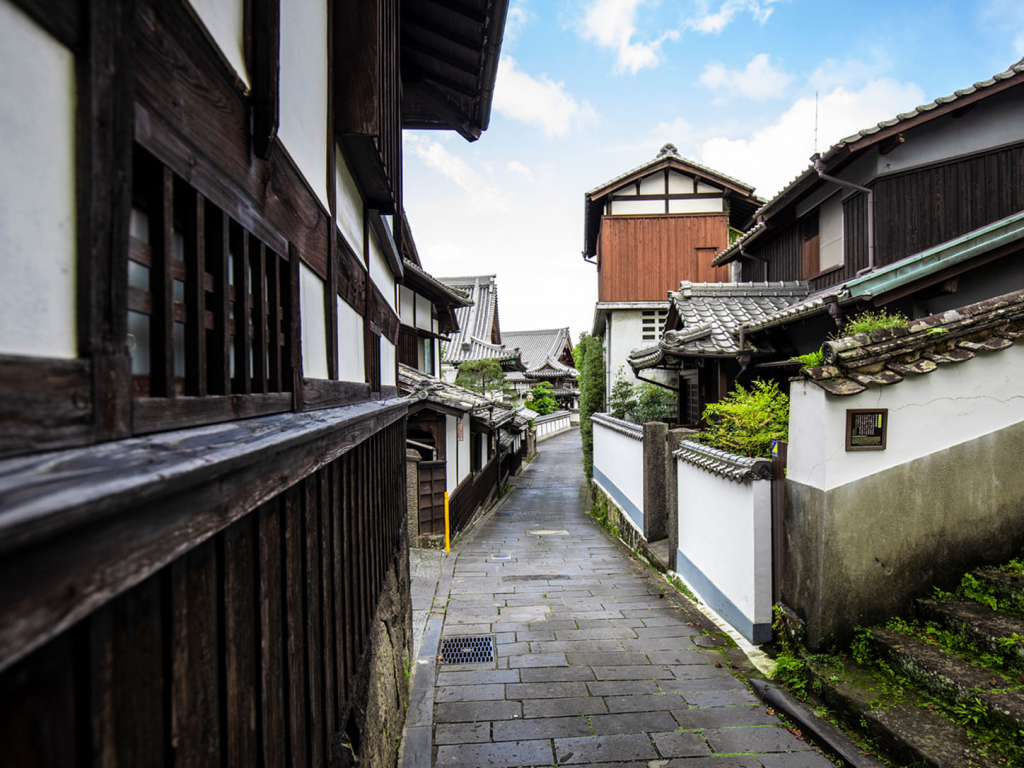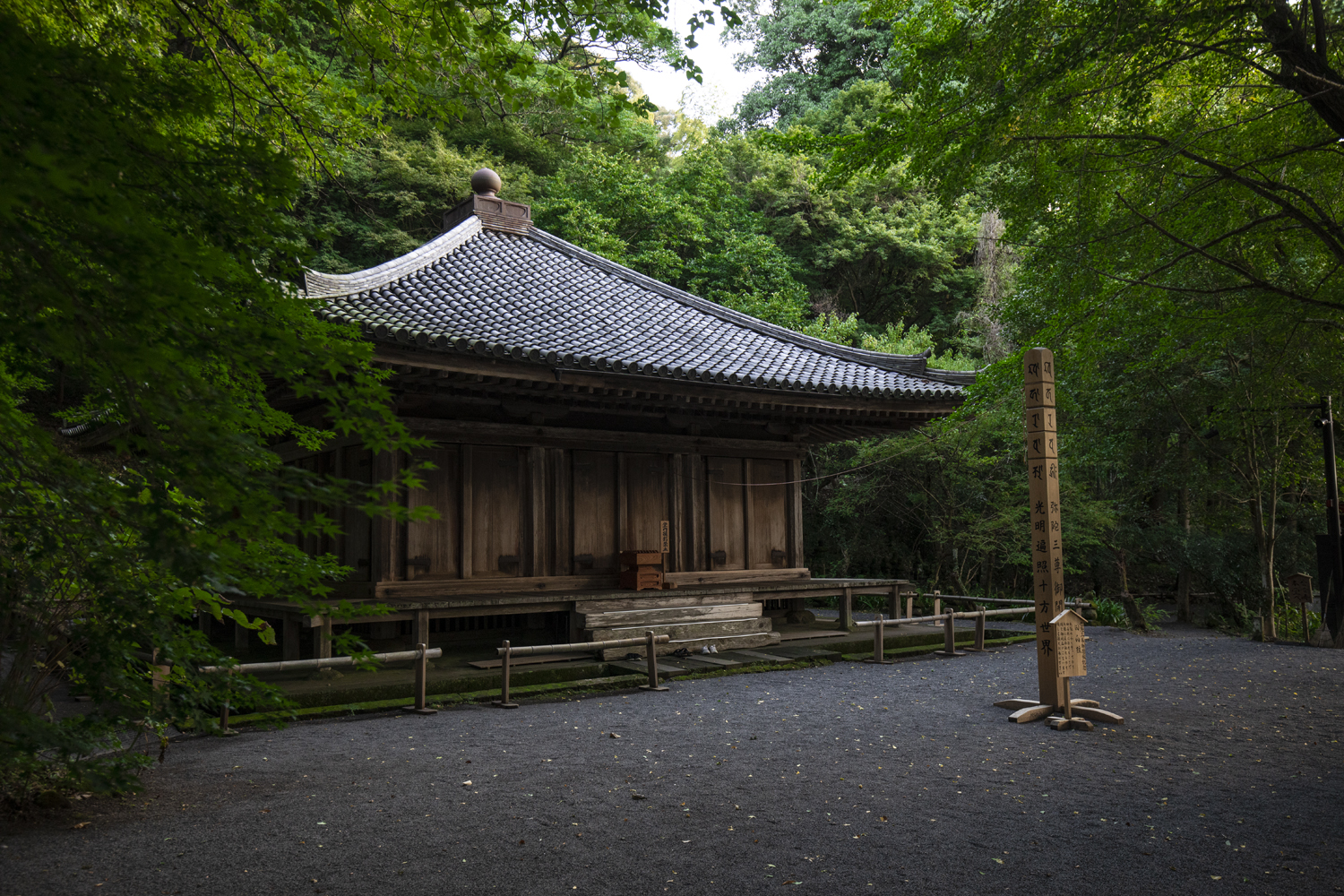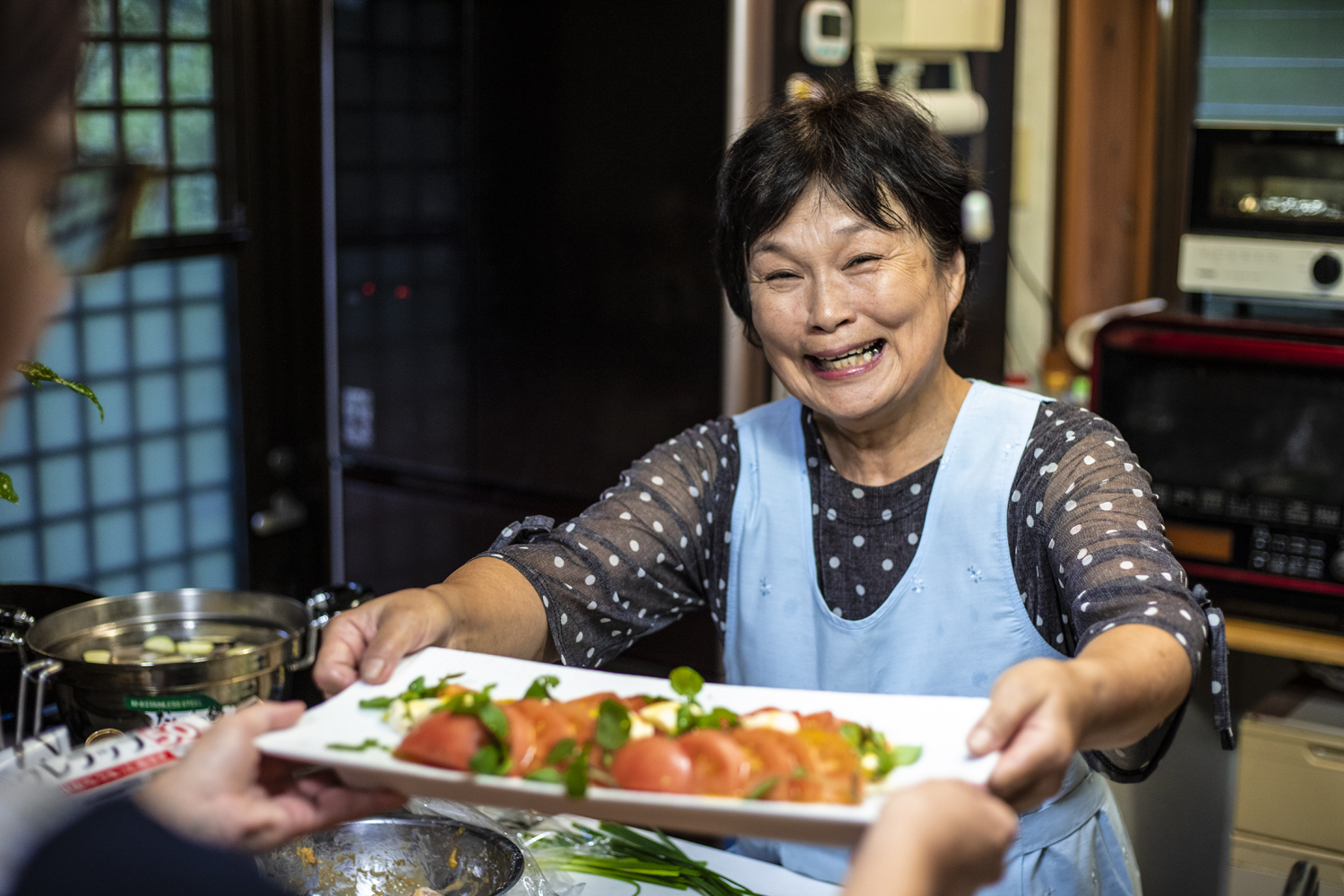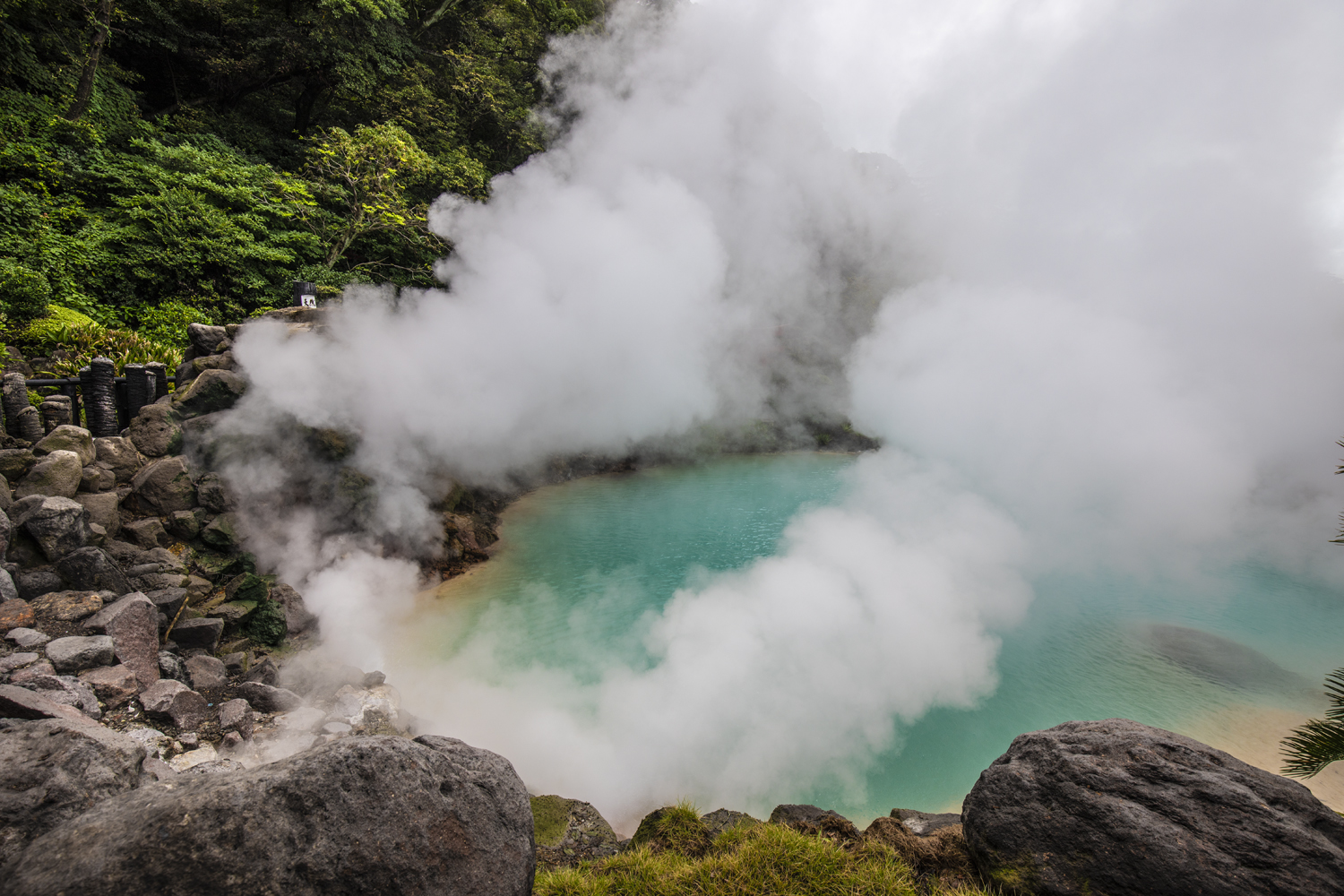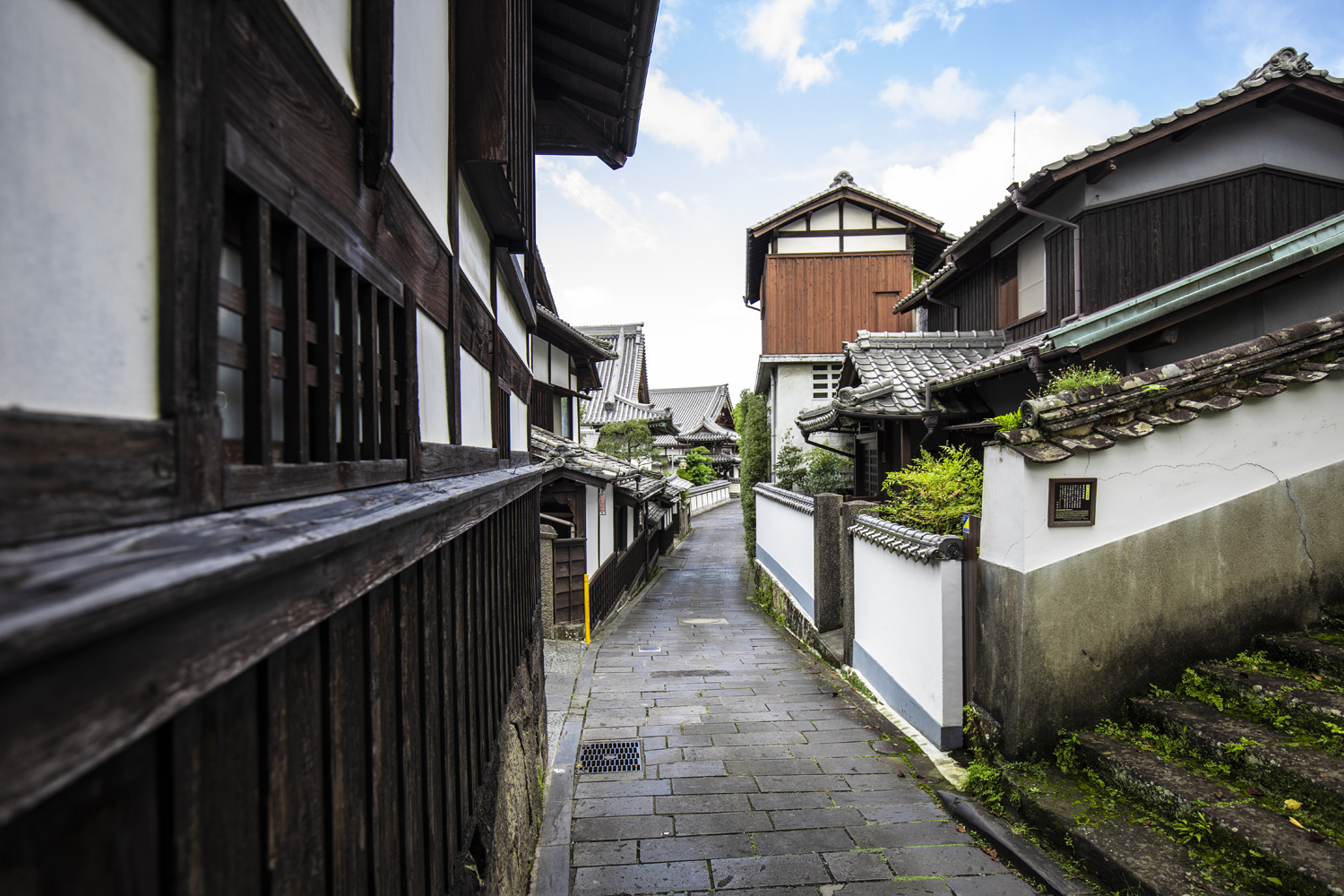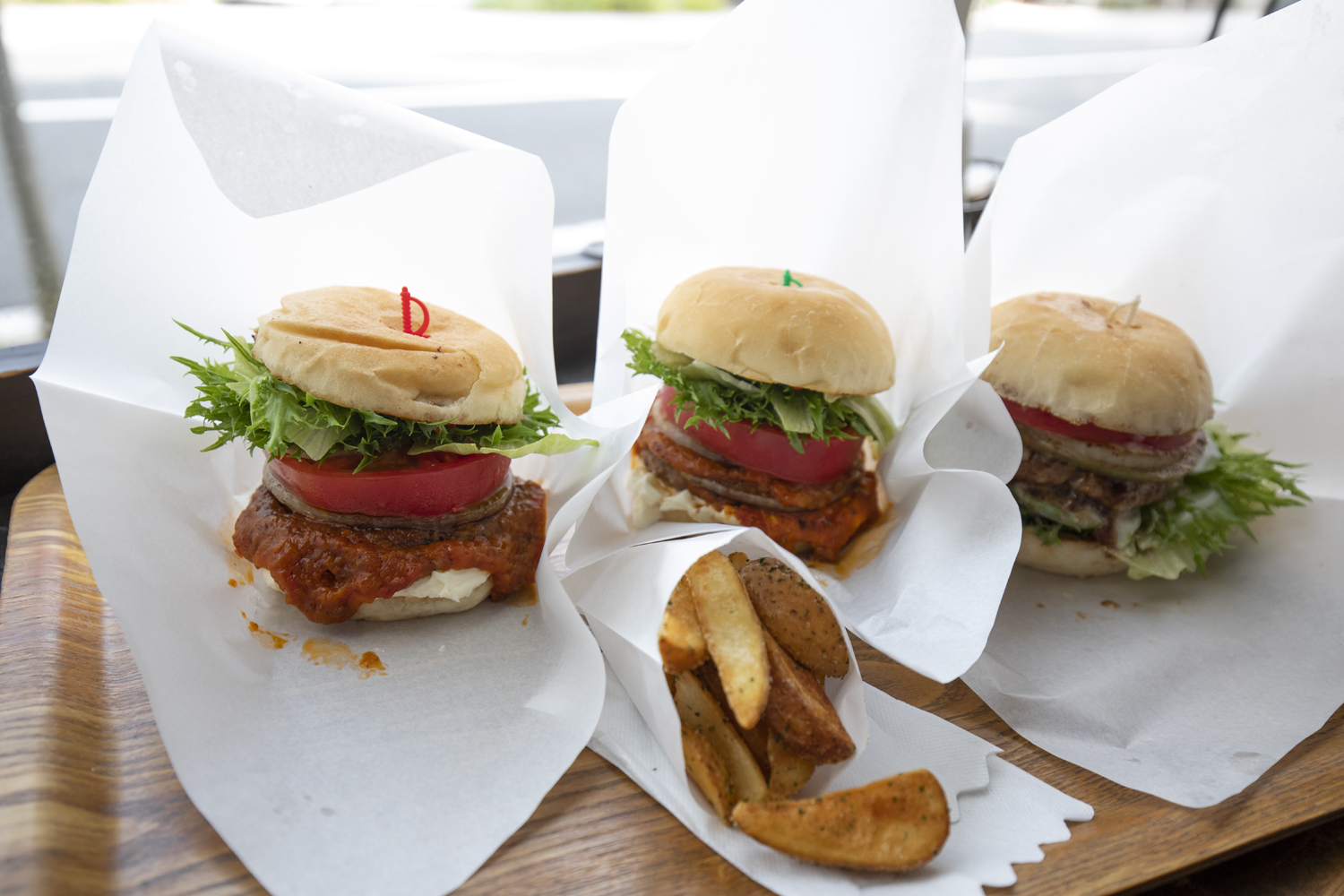Not everyone has heard of Kyushu’s hot spring paradise, Oita. Here you’ll find a relatively untouched part of Japan with deep forests, moss-covered temples and an ever-present steam that seems to rise from the fiery pits of hell. Welcome to a land where Japanese folklore comes to life and ogres aren’t always evil.
Read on for our eight top things to do in Oita…
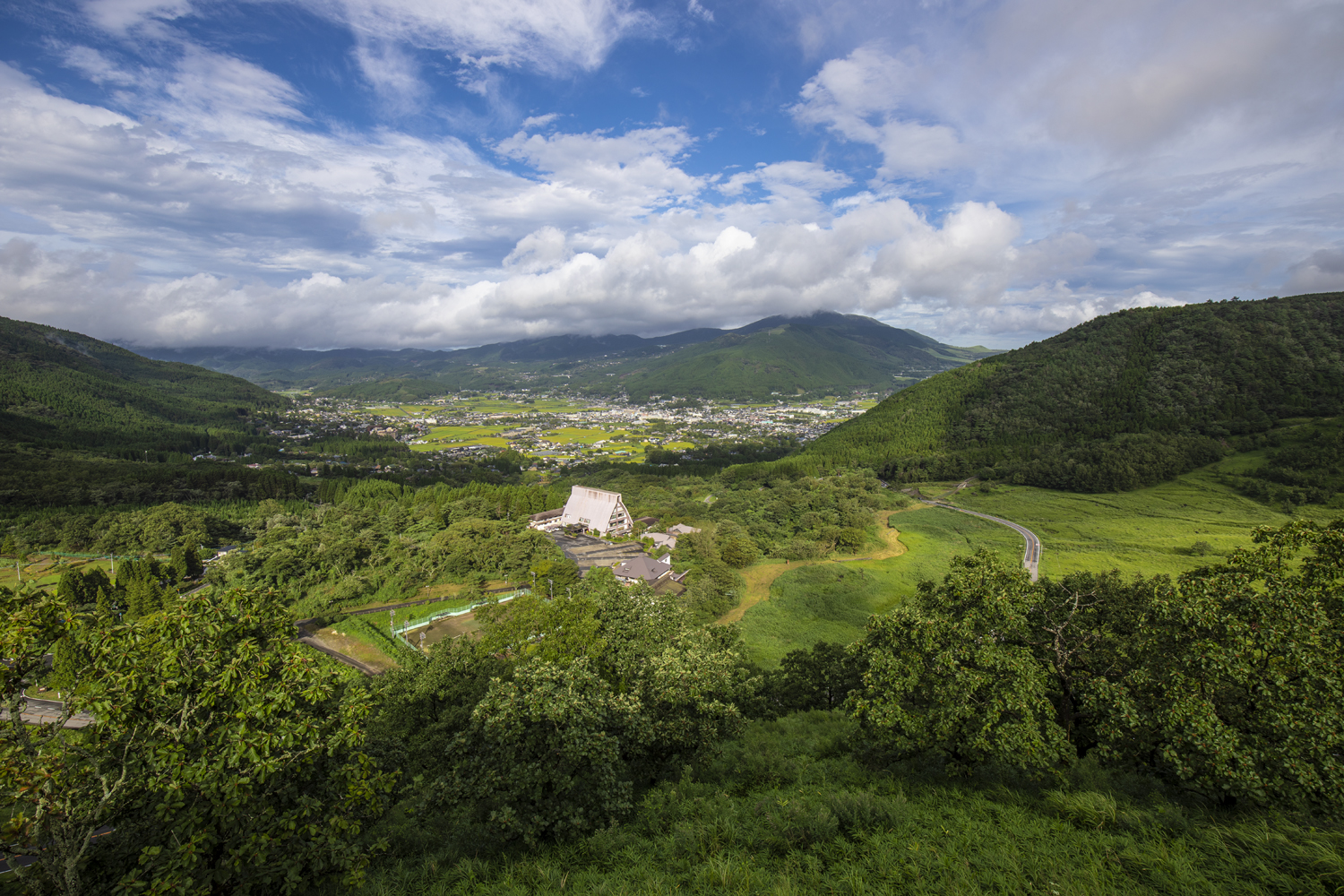
1. Trekking in the Sobo-Katamuki-Okue Biosphere Reserve
The mountains of Sobo, Katamuki and Okue are Kyushu’s highest peaks and create a natural bridge with the Oita and Miyazaki prefectural borders. Awarded a UNESCO eco park status in 2017, the area is also a model for how humans can coexist with nature. It’s a burgeoning expanse of approximately 240,000 hectares that protects many rare flowers, trees and animals – including the curious Japanese serow.
From Taketa city, you can start your trek at the Koubaru Mountain Entrance parking lot. If you’re not comfortable with steep climbs or wading through water, choose the easier walking course, a two-hour return-trip. It’s still a challenging trek, and unlike many other places in Japan, you may not see a single person on your journey up part of the mountain. This shorter path takes you through the deep, unblemished forests of Mount Sobo, down narrow footpaths and across rickety bridges. It’s a test of courage and patience but will have you back in town by lunch.
More adventurous souls can take one of the more difficult routes available – most with different starting points – but having a seasoned guide with you is recommended.
2. Meditate in Kyushu’s Oldest Wooden Structure
Visitors staying at Ryoan Fukinotou are not only spoiled by a soothing wooden hot spring bath and meticulously prepared meals with seasonal vegetables, but also have the opportunity to experience a zazen meditation session in nearby Fukiji Temple’s main structure. The building is Kyushu’s oldest wooden structure, said to be constructed in 718 using a single Japanese torreya tree. Nestled in the midst of a mossy green forest, Fukiji is the perfect place to get away from the rest of the world and find yourself.
From Ryoan Fukintou it’s barely a two-minute walk to the temple – a happy convenience considering the early 7am start. The temple’s deputy head priest Jun-yu Kono leads the zazen practice and begins by explaining how to sit and breathe during the meditation. Though the experience is an hour in total, the meditation lasts 40 minutes and is followed by a 20-minute Buddhist ceremony. Kono also explains that the wooden interior and exterior, which, while plain at first sight, hides dozens of dancing deities that were once vibrant symbols of the temple’s prosperity but have faded with time. Let this tranquil place start your day right.
More info at ryoanfukinotou.com/
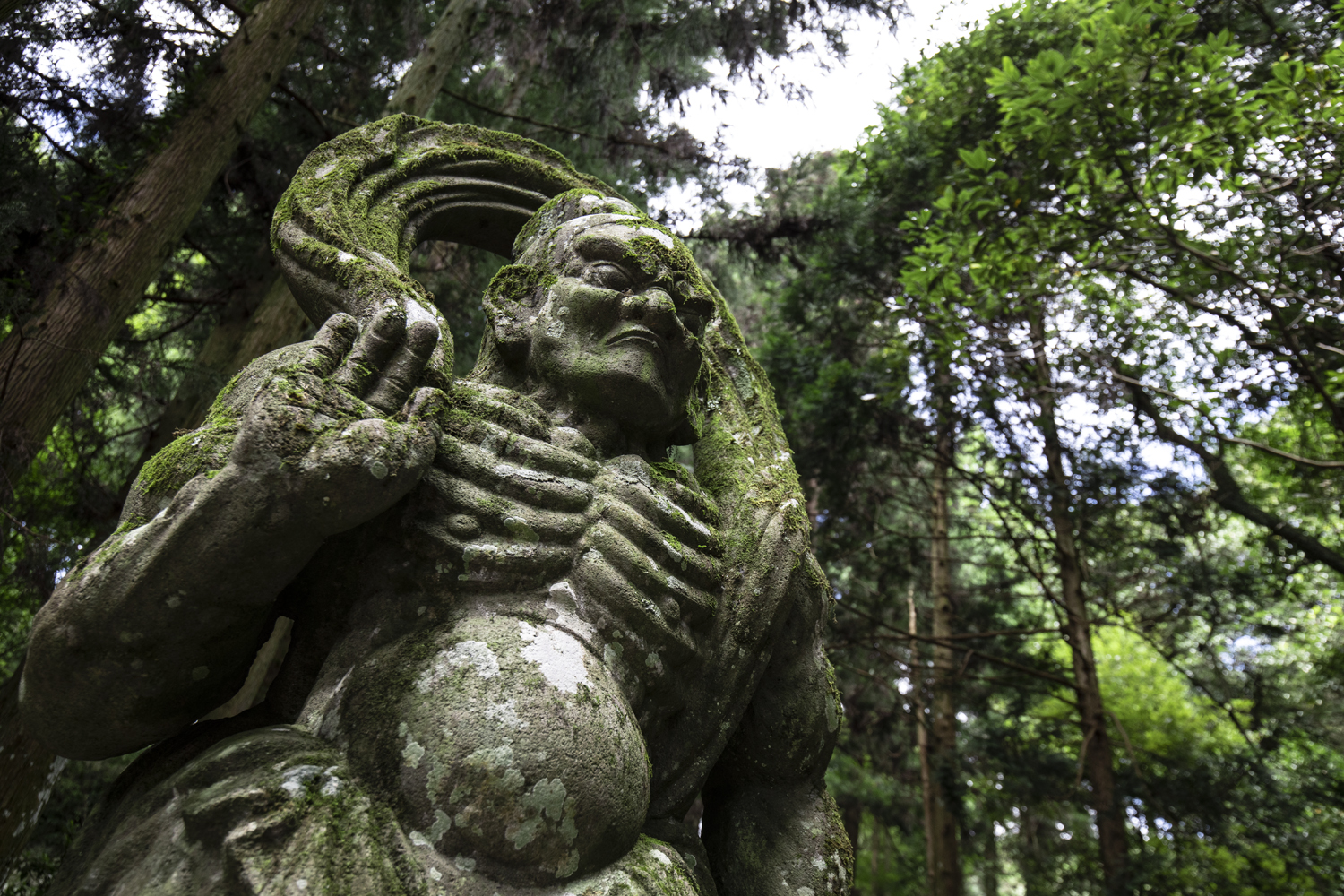
3. Gaze Upon the Stone Magaibutsu Reliefs
Head into the deep cedar forests of Bungotakada to find a steep stone staircase that looks like it was made by haphazardly dropping rocks down the mountain. Legend says that an ogre, otherwise gentle in nature, begged the Shinto deity Gongen for a taste of human flesh. The deity was aghast by this request, but granted the ogre his wish on the condition that he build 100 stone steps up a mountainside in one night. The ogre worked fast and when Gongen went to check on him, he was almost finished with his task. Thinking quickly, Gongen crowed like a rooster, hoping the ogre would think dawn was already at hand and he had failed. It worked – the ogre ran away in fear that the deity would kill him and left the stone steps unfinished.
The uneven steps number more than 400 and near the top there are two Buddhist carvings in the mountainside known as the Kumano Magaibutsu. Dainichi Nyorai on the right dates back to the 10th or 11th century, while Fudo Myo-o is a later addition from the 12th century. Though some details have been worn away by the elements, they are strikingly detailed for the large size and age. Climb to the very top of the stone steps to find a shrine dedicated to Gongen. Guided tours are available if booked in advance and audio guides in multiple languages via wifi onsite.
More info at www.showanomachi.com/spots/detail/136
4. Do a Farm Stay in Yufuin
Oita Prefecture is a pastoral paradise with rolling hills, endless rice fields and open spaces galore. For a true taste of the area and a chance to get to know the locals who live here, try a farm stay. Depending on your host, you can learn how to cook Japanese food, help harvest fruit or rice, forage for bamboo shoots, or even learn to make traditional crafts.
There are several farms that open their homes to visitors – simply pick one that offers an activity that interests you and your family the most. Farm stays are excellent opportunities to get close to people you otherwise would never meet and learn about their lives. It’s a compact cultural exchange in the relaxed setting of someone’s home. One of these homes is Miharashi no Sato Nirinsou, where the Imis will proudly share the beauty of their garden and give a taste of their homemade miso and other delicacies.
More info at yufuguri.jp/inns
5. Roam the Seven Hells of Beppu
Gas expulsions and fearsome smells dictate Beppu’s landscape and for many centuries kept people away because of its jigoku (hells), which people believed were cursed. Now, crowds flock to these geological curiosities and even pay for the privilege to view them. And truly, it is a privilege. There are seven hells in total, each with its own distinct color, features and … smell.
The Umi-jigoku, named for its visual similarity to the sea, is a stunning milky turquoise pool of steaming water that bursts from the rocky edges. The Oniishibouzu-Jigoku (literally Oniishi Shaven Head Hell) is named for its smooth gray bubbles that slowly pop up on the muddy surface and look like the top of Buddhist monks’ heads. Japan’s oldest hell, the hauntingly named Chinoike-Jigoku (Blood Pond Hell), blends with blood-red clay to get its distinctive rusty color. The clay is sold on site and is said to be an effective treatment for a variety of skin ailments.
Take the time to explore each hell along with their gift shops and eateries (hot-spring steamed dumplings and eggs are popular) for an unforgettable sensory experience.
More info at www.beppu-jigoku.com
6. Have a Hot Spring-steamed Dinner at Sally Garden Yanagiya
What better way to experience the power of Beppu’s hot springs than by cooking with them? Having a bath in the waters is a given, but stay at Sally Garden Yanagiya for the chance to use the inn’s outdoor natural steam kitchen to cook yourself a mouthwatering meal of steamed veggies, meat and seafood. Order one of the inn’s filling sets when booking your room, or make your way to the supermarket down the street to get a selection of ingredients to suit your mood. The kitchen is self-service, so simply prep everything yourself and enjoy your meal in the inn’s lounge area or courtyard.
For the most obvious way to enjoy the hot springs here, Yanagiya has two bath areas (they switch the male and female sides every evening so check the times to make sure you get into the right one). Don’t miss the one on the upper level as it has a small open-air bath and a sauna. The inn also offers discounts to other hot springs in the area and if you head to the public bath around the corner wearing your Yanagiya yukata, you’ll get free entry.
More info at beppu-yanagiya.jp/english/
7. Trace the Footsteps of Samurai in Usuki
Old castle town Usuki hides historical treasures galore that showcase its unique past. There are more than 60 stone Buddhas carved into the mountainside, with several being over 1,000 years old. No one knows exactly why they were made or why there are so many and their mystery continues to puzzle both visitors and scholars alike.
Usuki was also home to Otomo Sorin, a samurai who converted to Christianity and whose presence is still felt in the city. Other notable samurai include the Inaba family who ruled the region for over 270 years from 1600 to 1871. The stability of their peaceful leadership ensured the preservation of many beautiful buildings and businesses that visitors can stop by even now.
The Nioza Historical Road is a particularly beautiful area. It’s a hilly road that winds past old temples and abodes that, though they have found new roles (some as cafés and gallery spaces), are in extremely good condition considering their age. Other shopping streets nearby boast an eclectic mix of post-war Showa architecture and storehouses from over 400 years ago, making a stroll through here an intriguing visit to the past.
More info at www.usuki-kanko.com
8. Bite into a Yufuin Burger
Yufuin Burger lies on Yunotsubo Street, Yufuin’s charming shopping street lined with cute cafés, well-stocked souvenir shops and plenty of picturesque photo opportunities. All burgers are made using 100 percent beef and vegetables which are either locally grown in Oita or domestically produced. Each burger is freshly made to order and topped with a mild cream cheese and homemade tomato sauce on top of the usual lettuce, tomato and onion. Fork out a little more for the Bungo beef burger, which is made using Oita’s brand wagyu beef. It’s not as famous as Kobe, but is unrivaled in its tender, melt-in-the-mouth richness.
Yufuin does not have a website, so part of the adventure is finding them in the first place. Look out for a retro sign of a young boy eating one of their burgers to make sure you’ve found the right place.
3034-5 Yufuin-cho Kawakami, Yufu City, Oita
Learn more about Oita and book your trip via the ANA Japan Trip Planner page.
How to Get to Oita
From Tokyo:
By Air
Haneda Airport -> approx 1 hr 30 mins -> Oita Airport -> Airliner Bus (approx 1 hr 5 mins) -> Oita city
Book your trip here.
From Kumamoto:
By Train
JR Kumamoto Station -> approx 1 hr -> Kokura Station -> 1 hr 20 mins -> Oita Station
By Car
Kumamoto city -> approx 2 hrs 20 mins -> Oita city
From Fukuoka:
By Train
Hakata Station -> approx 2 hrs 20 mins -> Oita Station
By Car
Fukuoka city -> approx 2 hrs 20 mins -> Oita city
Photographs by David Jaskiewicz
Sponsored Post

